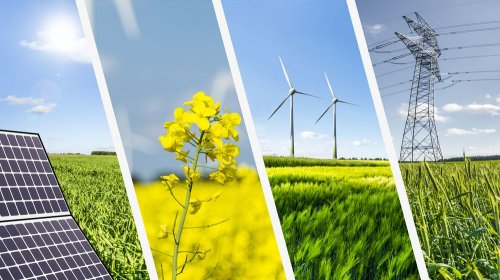A report by the Statistical Review of World Energy found that a record increase in renewable energy capacity to 266 GW did not affect the dominance of fossil fuels in 2023.
Global energy demand rose 1%, with fossil fuels accounting for 82% of generation, Reuters reported.
It is noted that against the background of the energy crisis and the Russian-Ukrainian war in Europe and Asia, gas and coal prices have reached record levels.
The report highlighted that oil, gas and coal will provide the majority of energy demand in 2022, despite the largest increase in green capacity on record.
"Despite further significant growth in wind and solar in the energy sector, overall global energy-related greenhouse gas emissions have risen again," said Juliet Davenport, president of the UK-based global industry body Energy Institute. "We are still heading in the opposite direction to that required by the Paris Agreement".
It says the world needs to cut greenhouse gas emissions by around 43% by 2030 compared to 2019 levels to have any chance of meeting the international Paris Agreement's goal of keeping warming well below 2°C.
The main conclusions from the report:
Consumption:
- global primary energy demand grew by around 1%, slowing by 5.5% compared to 2021;
- energy consumption increased everywhere except Europe;
- RES, excluding hydropower, provided 7.5% of global energy consumption, about 1% more than in 2021;
- electricity production increased by 2.3%, slowing down compared to the previous year. Wind and solar grew to a record 12% of electricity generation, outstripping nuclear, which fell 4.4%, and met 84% of the increase in net electricity demand;
- the share of coal in electricity production remained dominant at the level of about 35.4%;
Oil:
- oil consumption increased by 2.9 million barrels per day to 97.3 million b/d. Growth slowed by 0.7% compared to 2019;
- oil production increased by 3.8 million b/d, with most of it coming from OPEC members and the United States;
Natural gas:
- global gas demand fell by 3% but still accounted for 24% of primary energy consumption, slightly lower than in 2021;
- production of liquefied natural gas (LNG) increased by 5% to 542 billion m3;
- in Europe, LNG imports increased by 57%, while the countries of the Asia-Pacific region and South and Central America reduced purchases;
- Japan has replaced China as the world's largest LNG importer;
Coal:
- coal prices reached record levels and increased by 145% in Europe and by 45% in Japan;
- coal consumption rose 0.6%, the highest level since 2014, mainly due to demand in China and India, while consumption in North America and Europe declined;
- coal production was 7% higher than in 2021, with the largest growth coming from China, India and Indonesia;
RES:
- the growth of green energy, with the exception of hydropower, has slowed somewhat to 14%, and solar energy is ahead of wind energy;
- the most solar and wind capacities were added in China;
Emissions:
- global energy-related emissions, including industrial processes and flaring, rose 0.8% to a new high of 39.3 billion tonnes of CO2-equivalent;
Minerals:
- prices for lithium carbonate increased by 335%, cobalt – by 24%.
- lithium and cobalt production increased by 21%.
It will be recalled that a study by the climate analytical center Ember showed that global carbon emissions from energy production peaked in 2022 and will start to decrease.
As EcoPolitic previously reported, specialists of the International Energy Agency called for rapid transition from coal generation to alternative energy sources and developed accessible and fair guidelines for governments. After all, emissions from existing coal assets alone will push the world beyond the 1.5°C warming limit.





